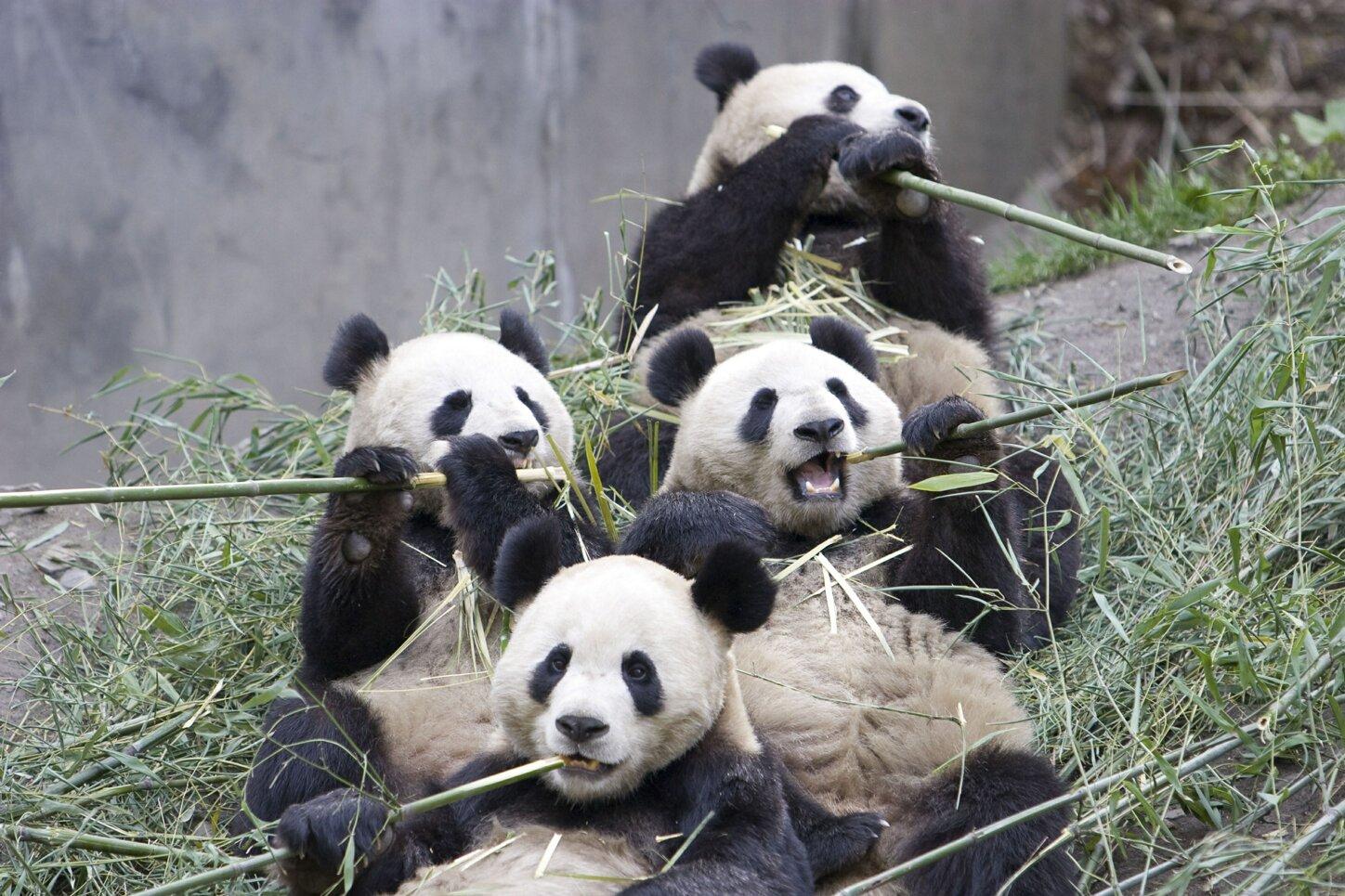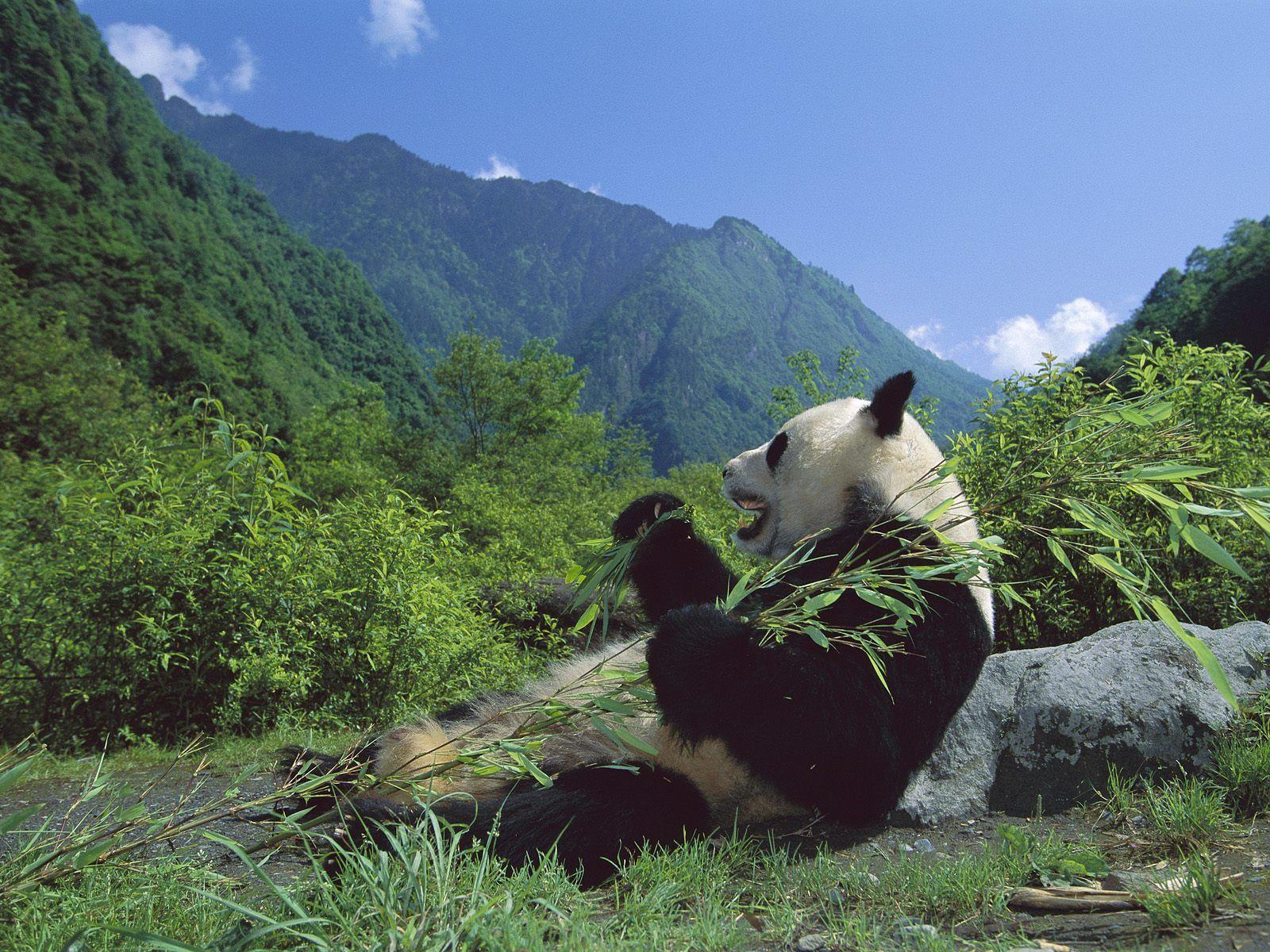 Bamboo is more than a food source for the giant panda it also provides the habitat for these endangered bears. Yes, the large loveable bears do spend at least 12 hours a day eating bamboo (some can eat as much as 84 pounds in a single day). But they also depend on the bamboo forest to live and socialize. For the 1600 remaining giant pandas, the human population and overdevelopment of their lands is slowly encroaching on their way of life. While the giant panda population was once widespread throughout southern and eastern China as well as Myanmar and northern Vietnam, they are now restricted to only 20 or so isolated patches of mountain forest in a few Chinese provinces.
Bamboo is more than a food source for the giant panda it also provides the habitat for these endangered bears. Yes, the large loveable bears do spend at least 12 hours a day eating bamboo (some can eat as much as 84 pounds in a single day). But they also depend on the bamboo forest to live and socialize. For the 1600 remaining giant pandas, the human population and overdevelopment of their lands is slowly encroaching on their way of life. While the giant panda population was once widespread throughout southern and eastern China as well as Myanmar and northern Vietnam, they are now restricted to only 20 or so isolated patches of mountain forest in a few Chinese provinces.
A new study published this past July shows that the giant panda habitats are too fragmented and need to be reconnected in order for the endangered animals to maintain their genetic diversity. The study, conducted by researchers from the Chinese Academy of Sciences and the China Wildlife Conservation Association, both in Beijing, was published July 23 in the open-access journal BMC Genetics.
The researchers visited four patches of habitat in the Xiaoxiangling and Daxiangling mountains, with a mean distance of 76 kilometers between each patch. A total of 192 fecal samples were collected and revealed 53 unique genotypes. This, the researchers say, demonstrates signs of fragmentation within the panda population.
One of the study s co-authors, Fuwen Wei from the Chinese Academy of Sciences, said in a prepared statement: These results suggest that gene flow will be enhanced if the connectivity between the currently fragmented bamboo forests is increased. This may be of importance to conservation efforts as gene flow is one of the most important factors for maintaining genetic diversity within a species and counteracting the negative effects of habitat fragmentation.
While some might think that food, water and shelter are the necessities for life, genetic diversity is the more complex need that all species require to survive. When a specie s environment changes, slight gene variations are necessary to produce changes in the organisms anatomy that enables it to adapt and survive. Genetic diversity is also essential for healthy reproduction (a problem for the Giant Panda) and with a reduction in genetic diversity comes a higher susceptibility to diseases.
So what is the solution to this problem? A Bamboo Social so to speak. The researchers say that bamboo forests need to be replanted, which would give the giant pandas enough food to wander and mix their populations. Doing so will restore population viability of the giant panda in these regions, the authors wrote in the conclusion to their paper.
 As researchers, wildlife experts and government officials put together a bamboo planting initiative, a new study is in the works to use some of the same molecular technique (DNA fingerprinting) employed in the habitat study to obtain a better assessment of the panda s population in the wild.
As researchers, wildlife experts and government officials put together a bamboo planting initiative, a new study is in the works to use some of the same molecular technique (DNA fingerprinting) employed in the habitat study to obtain a better assessment of the panda s population in the wild.
While planting bamboo in your own yard won t bring you a giant panda, there are still plenty of environmental and aesthetic benefits gained. Visit Green Earth News section on the Bamboo Garden for tips on creating your own bamboo oasis. (Green Earth News)





